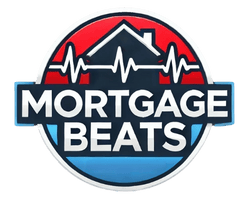Understanding What Really Determines Mortgage Rates
Mortgage rates might seem mysterious, but they follow specific market forces you can learn to track. The foundation comes from the 10-year Treasury yield, but lenders then add their own margins based on risk, overhead costs, and profit goals. Understanding this helps explain why rates vary between lenders and why they fluctuate daily.
Beyond these basics, your personal rate depends on loan-specific factors like property type, loan amount, and occupancy status. Jumbo loans typically have different rates than conforming loans, while investment properties carry higher rates than primary residences. Even your state’s regulations can influence the final rate you’re offered.
At NorCal Real Estate & Financial Service, we educate clients on these rate determinants. Our transparent approach helps borrowers understand exactly why they’re being quoted specific rates and how different choices could improve their terms.
Fixed vs. Adjustable: Choosing the Right Rate Structure
The first major rate decision involves choosing between fixed and adjustable-rate mortgages. Fixed rates provide certainty over the entire loan term but often start higher than introductory ARM rates. ARMs offer lower initial rates but carry uncertainty about future adjustments that could significantly increase payments.
Your ideal choice depends on your timeline and risk tolerance. Buyers planning to move or refinance within 5-7 years might benefit from ARMs, while those staying long-term usually prefer fixed-rate stability. Hybrid ARMs (like 5/1 or 7/1) offer middle-ground solutions with initial fixed periods followed by adjustments.
NorCal Real Estate & Financial Service helps clients analyze these options using personalized timelines and financial projections. We compare total estimated costs across different loan structures to determine which truly offers the best value for each situation.
The Relationship Between Rates and Points
Mortgage points (prepaid interest) create an important trade-off between upfront costs and long-term savings. Each point (1% of the loan amount) typically lowers your rate by 0.25%. This can make sense if you’ll keep the loan long enough to recoup the upfront cost through monthly savings—usually 4-7 years.
Lenders also offer negative points (credits) where they cover closing costs in exchange for a higher rate. This benefits cash-strapped buyers or those planning to refinance soon. The key is calculating the break-even point to determine which option makes financial sense for your situation.
NorCal Real Estate & Financial Service provides detailed break-even analyses for all point options. Our calculators show exactly how long you’d need to keep the loan to benefit from buying points—or when lender credits might be the smarter choice.
How Your Credit Score Impacts Your Rate
Your credit score significantly influences your offered rate, with differences of 50+ basis points between excellent and good credit tiers. Most lenders reserve their best rates for borrowers with scores above 740, with noticeable bumps at 760 and 780. Even small score improvements can sometimes qualify you for better pricing tiers.
The relationship isn’t always linear—some lenders offer particularly aggressive rate cuts at specific score thresholds. Multiple credit inquiries from mortgage shopping within a 45-day window count as a single inquiry, so you can comparison shop without worrying about damaging your score.
NorCal Real Estate & Financial Service helps clients optimize their credit before applying. We advise on strategic actions to boost scores into the next pricing tier and time applications to capitalize on recent improvements.
Timing the Market: When to Lock In Your Rate
Mortgage rates change daily based on economic data, Federal Reserve actions, and global market movements. While impossible to perfectly time the market, understanding seasonal trends and economic indicators can help identify favorable periods to lock. Spring often sees higher demand and rates, while winter may offer better deals.
Rate locks (typically 30-60 days) protect you from increases but may carry fees if extended. Float-down options let you capture rate decreases before closing for an upfront cost. The best strategy depends on current rate trends and your closing timeline.
NorCal Real Estate & Financial Service monitors rate markets daily. We advise clients when to lock based on economic forecasts and personal transaction timelines, helping secure optimal timing.
Shopping Multiple Lenders Without Hurting Your Credit
Smart rate shopping requires getting quotes from multiple lenders, which you can do without multiple credit dings. The credit scoring models allow rate shopping within a 45-day window (sometimes longer for some models) while counting as a single inquiry. Start by getting pre-approved with one lender, then request quotes from others using that credit pull.
Compare not just rates but also fees—a slightly higher rate from a lender charging fewer points might be better. Ask each lender for the same loan terms (e.g., 30-year fixed, no points) to ensure apples-to-apples comparisons. Online lenders often advertise low rates but may have higher fees or poorer service.
NorCal Real Estate & Financial Service simplifies this process by providing multi-lender comparisons through our network. We handle the shopping while ensuring your credit remains protected, presenting you with clear, comparable options.
Online vs. Traditional Lenders: Rate Comparison Strategies
The mortgage landscape now includes online lenders, traditional banks, credit unions, and broker channels—each with different rate structures. Online lenders often advertise the lowest rates but may lack local expertise or have slower processing times. Credit unions frequently offer competitive rates to members but may have limited product options.
Traditional banks provide stability and relationship benefits but might not match online rates. Mortgage brokers can shop multiple lenders but add another layer of fees. The key is comparing Loan Estimates from each type to see the true cost difference after all fees.
NorCal Real Estate & Financial Service maintains relationships across all lender types. We know which institutions consistently deliver on their rate quotes with reliable service, helping clients avoid bait-and-switch tactics some online lenders employ.
Reading Between the Lines on Loan Estimates
The Loan Estimate form standardizes rate comparisons but requires careful reading. Page 1 shows the interest rate and monthly payment, while page 2 details lender fees (Box A) and third-party charges (Boxes B and C). Compare each section across lenders to identify where one might be padding fees to offer a deceptively low rate.
Watch for rate lock fees, application charges, and processing costs that vary widely. Some lenders bury fees in “origination charges” while others itemize them. The APR calculation on page 3 incorporates all costs to help compare total loan expenses between offers.
NorCal Real Estate & Financial Service provides line-by-line Loan Estimate reviews. We highlight fee differences and explain which costs are negotiable versus fixed, empowering clients to make fully informed comparisons.
Negotiation Tactics That Actually Work
Mortgage rates aren’t set in stone—effective negotiation can save thousands. Start by getting competing offers in writing, then ask your preferred lender to match or beat them. Highlight your strong qualifications (high credit score, low DTI, large down payment) as leverage for better terms.
Timing negotiations around month-end or quarter-end can help when lenders need to meet volume targets. Asking about “relationship discounts” for moving other accounts (like deposits or investments) to the lender sometimes yields rate improvements. Even a 0.125% rate reduction can save $20,000+ on a 30-year loan.
NorCal Real Estate & Financial Service negotiates on clients’ behalf using our lender relationships and market knowledge. We know which fees lenders can waive and which rate tiers have flexibility, securing deals most borrowers couldn’t get alone.
How NorCal Real Estate & Financial Service Simplifies Rate Shopping
Our mortgage experts transform rate shopping from overwhelming to straightforward. We start by understanding your financial profile and homeownership goals, then identify lenders best suited to your situation. Our proprietary analysis compares true costs across multiple options, not just advertised rates.
We monitor daily rate movements and lender specials, alerting clients to timely opportunities. Our relationships with lenders often secure rate exceptions not available to the general public. Throughout the process, we explain each option in clear terms so you can confidently choose the best deal.
With NorCal Real Estate & Financial Service, you gain an experienced advocate who shops rates so you don’t have to. We handle the complexity while you focus on finding your dream home—knowing you’ll get the most competitive financing available.
Conclusion
Becoming an informed rate shopper saves significant money over your mortgage’s life. By understanding what drives rates, comparing offers properly, and negotiating effectively, you can secure terms that save tens of thousands in interest. The key lies in looking beyond advertised rates to the complete loan picture.
NorCal Real Estate & Financial Service makes this process effortless while ensuring you get the best possible deal. Our expertise cuts through the complexity of mortgage pricing, giving you confidence in your financing decisions.
Ready to shop rates like a pro? Contact NorCal Real Estate & Financial Service today. Let us guide you to mortgage terms that fit both your current budget and long-term financial goals—because the right rate makes all the difference in your homeownership journey.
Ready To Get The Best Financial Advise, Email us at: Chris@mortgagebeats.com



